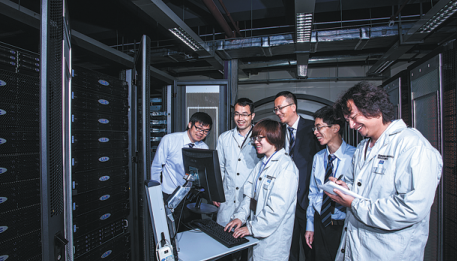Shenzhen maintains edge and ramps up funding for scientific R&D
Meanwhile, the city, though facing a land shortage problem to prop up further industrial development, has designated the best locations to build universities and scientific parks.
The young city, which was officially established in 1979, opened its first university in 1983. Now a couple of domestically leading universities, including Peking University and Tsinghua University, have set up campuses for graduate schools in Shenzhen.
Together with some new universities, a total of 15 colleges and universities operate in the city with about 113,200 full-time students. The city is expected to add an additional five universities in the next five years to establish a stronger reserve of talent, according to the government plan.
The latest rankings for young universities by Times Higher Education show, Southern University of Science and Technology, also known as SUSTech, founded in 2010 in Shenzhen, has entered the top 30 in the world and placed first on the Chinese mainland.
Xu Zhenghe, dean of College of Engineering at SUSTech, said the research-based university has developed a flexible system to encourage innovation of the faculties.

Researchers work at the National Supercomputing Center in Shenzhen. CHINA DAILY
They are allowed to work on their technological research and practices outside the university one day every week, Xu said.
The scientific achievements of the faculties can be priced in shares in a company so that the faculties, the university and the company can all enjoy the benefits of the cooperation, he added.
Wu Delin, Party secretary of the Shenzhen campus of Harbin Institute of Technology, said the school has set up more than 60 laboratories together with a group of famous companies, including Tencent, telecommunications leader ZTE and BGI, a world leading life science and genomics organization. Meanwhile, it has built industry research bases with another 60 companies.
The university has opened its large-scale instruments and equipment to the companies and solved more than 1,400 technical problems for them, Wu said.
Members of the Communist Party of China have also played an important role in innovative research in Shenzhen.
Teng Chao, a distinguished professor of the applied technology department at Shenzhen Polytechnic, has led his team to develop a new kind of polyimide alignment agent, which is a key material in producing liquid crystal display.
Teng said the spirit of the CPC inspires him to conquer the technical difficulties.



 Print
Print Mail
Mail